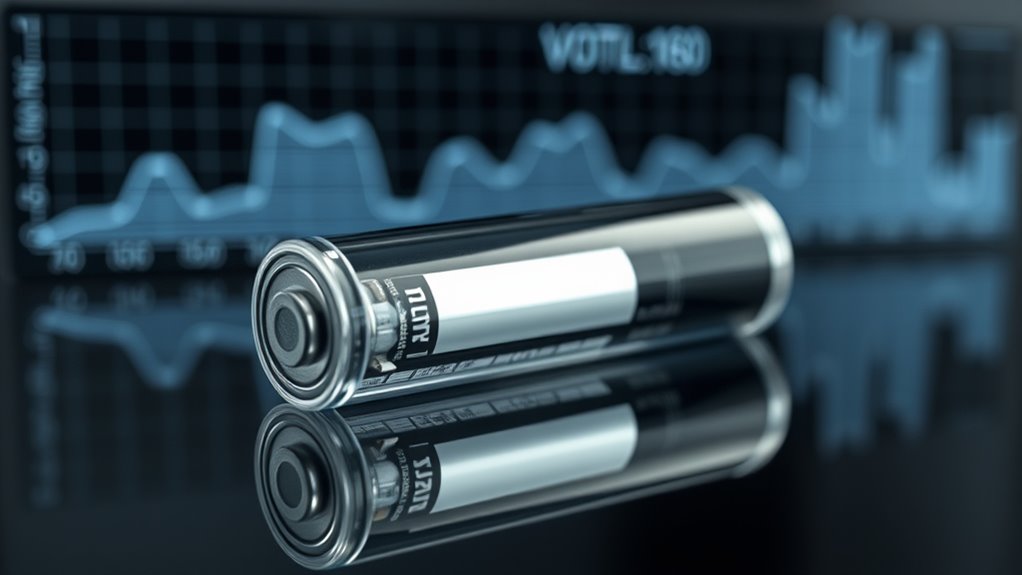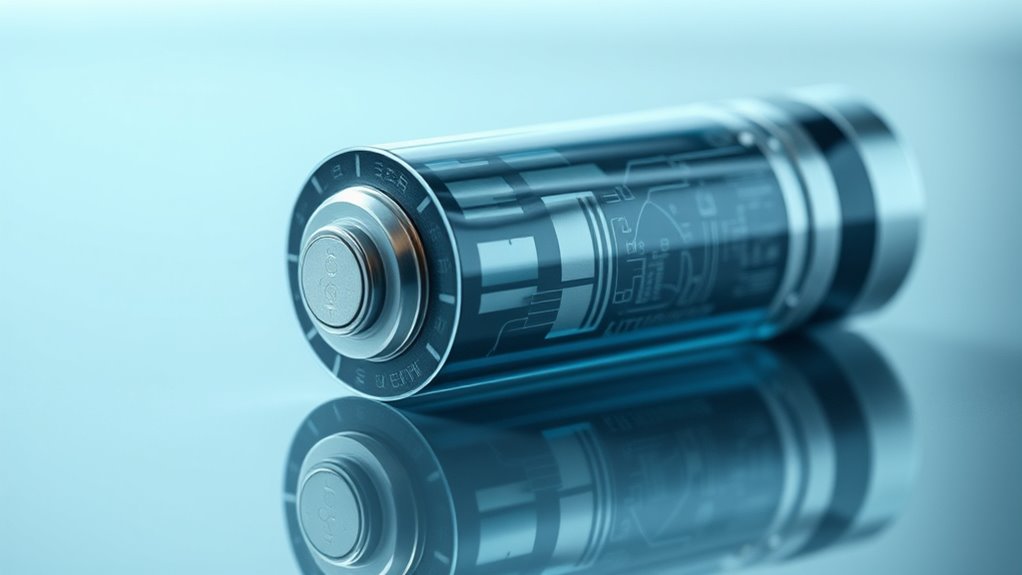Understanding how battery cycle life works helps you extend your device’s battery lifespan. When you frequently fully discharge or regularly go to low charge levels, it speeds up aging and reduces the total number of usable cycles. Keeping your battery between 20% and 80% minimizes wear and promotes longer life. If you’re curious about optimizing your charging habits, you’ll find more helpful tips as you explore ways to manage your battery health effectively.
Key Takeaways
- Battery cycle life declines as depth of discharge (DoD) increases, with full discharges causing faster capacity loss.
- Chemical reactions inside batteries degrade more rapidly during deep discharges, reducing overall lifespan.
- Shallow cycling by maintaining charge levels between 20-80% minimizes stress and prolongs battery health.
- Proper charge and discharge management, including avoiding rapid charging and extreme temperatures, enhances cycle longevity.
- Understanding battery chemistry and aging mechanisms helps optimize usage patterns for maximum cycle life.

Understanding battery cycle life and discharge is vital for maximizing the performance and longevity of your devices. When you grasp how batteries age and how different discharge strategies impact their lifespan, you can make smarter choices that extend your device’s usability. Battery aging occurs over time as the chemical reactions inside the cell gradually degrade, reducing its capacity to hold a charge. Each charge and discharge cycle contributes to this wear, but not all cycles cause equal damage. For instance, deep discharges—completely draining your battery before recharging—accelerate aging more than shallow, partial charges. Recognizing this pattern helps you adopt discharge strategies that preserve your battery’s health.
Understanding how discharge strategies affect battery aging helps extend device lifespan.
To optimize your battery’s lifespan, it’s vital to understand how cycle life relates to depth of discharge (DoD). The cycle life of a battery refers to the total number of complete charge-discharge cycles it can undergo before its capacity drops below a usable level, typically around 80% of its original capacity. When you frequently perform full discharges, you shorten the overall cycle life, causing your battery to wear out faster. Conversely, if you keep your device’s charge level within a moderate range—say between 20% and 80%—you reduce stress on the chemical components, slowing down battery aging. This approach is often called shallow cycling and is a key component of effective discharge strategies.
Implementing proper discharge strategies involves more than just avoiding full discharges. It also means understanding your device’s usage patterns and adjusting accordingly. If possible, avoid letting your battery drain completely, as this can cause stress and potential damage. Instead, recharge your device when it hits around 20-30%, and unplug it at about 80-90%. Not only does this minimize strain on the battery, but it also helps maintain a higher overall capacity over time. Additionally, avoid frequent rapid charging and extreme temperature conditions, as these factors further accelerate battery aging. Keeping your device in a cool environment and using chargers designed for your battery type can considerably extend its cycle life. Moreover, understanding battery chemistry can help you select devices with longer-lasting batteries.
Ultimately, mastering these concepts about battery aging and discharge strategies empowers you to care for your devices more effectively. By consciously managing how and when you charge your batteries, you’re actively prolonging their useful life. This not only saves you money over time but also ensures your devices remain reliable and efficient for longer periods. Remember, small adjustments in your charging habits can make a substantial difference in the overall health and longevity of your batteries, helping you get the most out of your technology.
Frequently Asked Questions
How Does Temperature Influence Battery Cycle Life?
Temperature critically influences your battery’s cycle life by impacting its thermal stability and temperature resilience. When exposed to high temperatures, your battery’s chemical reactions accelerate, risking degradation and reduced lifespan. Conversely, low temperatures can slow down these reactions, causing capacity loss and inefficiency. Maintaining a suitable temperature range ensures your battery remains thermally stable, boosting its overall temperature resilience and prolonging its cycle life.
Can Charging Speed Affect Battery Longevity?
Charging speed definitely affects your battery’s longevity. A high charging rate can cause battery heating, which accelerates wear and reduces cycle life. Rapid charging pushes more current into the battery, increasing the risk of thermal stress. To extend your battery’s life, avoid frequent fast charging and opt for slower, more gradual charging when possible. Proper management of charging speed helps maintain ideal battery health over time.
Do Different Battery Chemistries Respond Differently to Depth of Discharge?
Surprisingly, different battery chemistries handle depth of discharge quite differently, despite what you might expect. Chemistry differences mean some batteries, like lithium-ion, tolerate deeper discharges better, while others, such as nickel-cadmium, suffer more wear. Discharge variability impacts longevity, so you can’t treat all batteries the same. You’ll find that understanding these nuances helps you optimize battery life, rather than blindly pushing discharges and risking early failure.
How Do Manufacturing Variations Impact Cycle Life?
Manufacturing variations substantially impact your battery’s cycle life because inconsistencies in manufacturing, like uneven quality control, can introduce flaws that accelerate degradation. When manufacturing consistency isn’t maintained, you might see reduced durability and performance over time. High-quality control ensures each battery meets strict standards, extending its cycle life. By prioritizing consistent manufacturing practices, you help maximize your battery’s longevity and reliability, guaranteeing it performs ideally throughout its lifespan.
What Are the Environmental Factors Affecting Battery Degradation?
You might notice how environmental factors gently influence your battery’s health. Excessive heat accelerates degradation, while cold temperatures slow down chemical reactions, impacting longevity. Humidity and exposure to moisture can cause corrosion, shortening lifespan. Supporting battery recycling efforts and choosing sustainable materials can help reduce environmental stress. By protecting your battery from harsh conditions, you extend its life and contribute to a greener, more sustainable future.
Conclusion
Understanding how cycle life and depth of discharge affect your battery can extend its lifespan markedly. Did you know that shallow discharges can double your battery’s lifespan compared to deep discharges? By keeping your battery’s discharge level low and avoiding frequent deep cycles, you can save money and reduce waste. So, next time you use your device, remember that small changes in your charging habits can make a big difference for your battery’s health.










